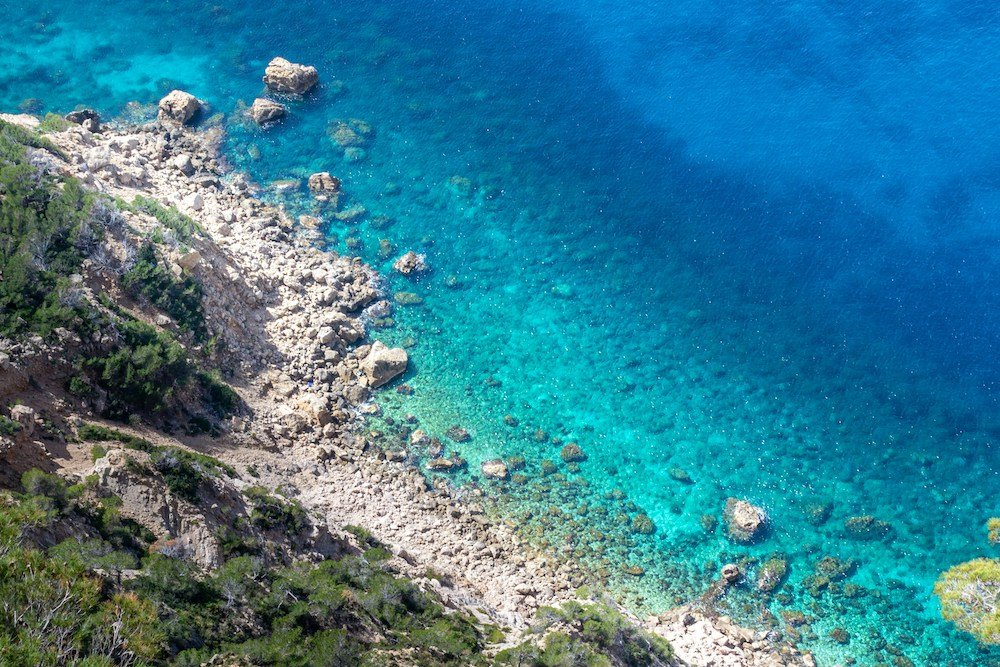
Spain, a country renowned for its rich cultural heritage and diverse landscapes, boasts a geographical diversity that extends beyond its mainland and offers a diverse range of islands near Spain.
From the rugged coastlines of the north to the sun-kissed beaches of the south, Spain offers a myriad of natural wonders to explore.
One of the most enticing aspects of Spain’s geography is its proximity to numerous enchanting islands.
These islands, scattered throughout the Mediterranean Sea and the Atlantic Ocean, offer travelers a diverse range of experiences, from lush greenery to volcanic landscapes and pristine beaches.
In this article, we delve into the allure of island tourism near Spain by highlighting 10 must-visit islands.
From the vibrant culture of the Balearic Islands to the dramatic scenery of the Canary Islands, each destination offers its own unique charm and attractions.
Whether you’re seeking adventure, relaxation, or cultural immersion, these islands near Spain promise an unforgettable experience for every traveler.
Now, let’s take a closer look at the 10 must-visit islands near Spain:
1. Tenerife
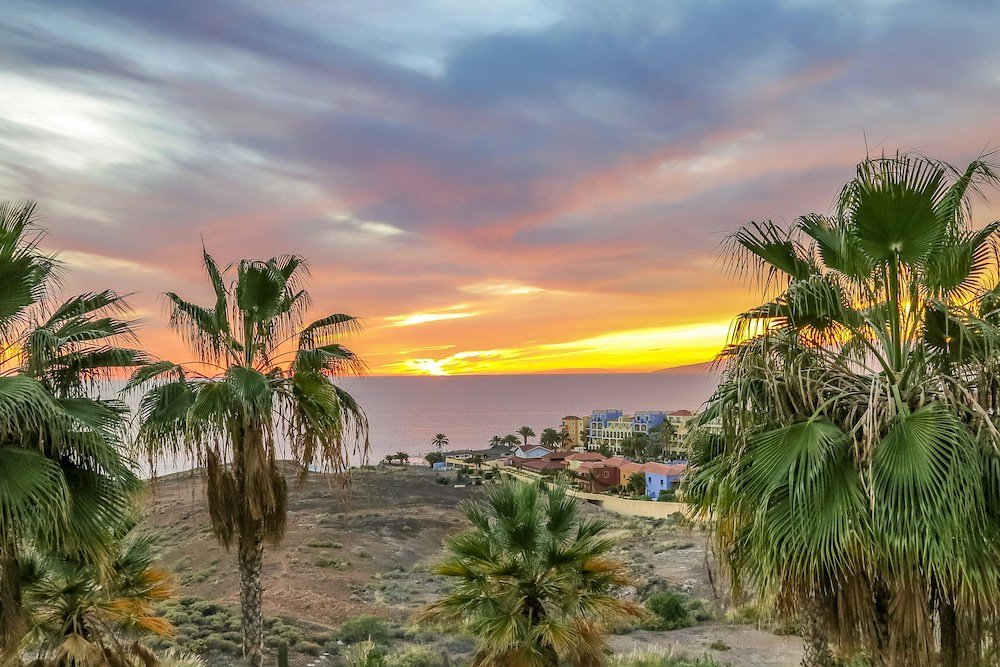
Tenerife, the largest of Spain’s Canary Islands, is a captivating destination known for its stunning natural beauty and vibrant culture.
Located off the coast of West Africa, Tenerife boasts a diverse landscape that includes majestic mountains, golden beaches, and lush forests.
Tenerife is home to an array of attractions that cater to every type of traveler.
From the breathtaking volcanic landscapes of Teide National Park to the charming villages nestled in the island’s interior, Tenerife offers a wealth of experiences waiting to be explored.
The island’s capital, Santa Cruz de Tenerife, is a bustling hub of culture and entertainment, featuring lively festivals, historic architecture, and vibrant street markets.
One of the highlights of visiting Tenerife is exploring the magnificent Teide National Park, home to Mount Teide, Spain’s highest peak.
Outdoor enthusiasts will delight in the hiking trails that wind through volcanic craters and lunar landscapes, offering panoramic views of the island below.
Tenerife is also renowned for its beautiful beaches, where visitors can soak up the sun, swim in crystal-clear waters, or indulge in water sports such as surfing and snorkeling.
When planning a trip to Tenerife, travelers should consider the diverse range of accommodations available, from luxury resorts to quaint guesthouses and self-catering apartments.
Public transportation on the island is reliable and convenient, with buses and taxis readily available to explore Tenerife’s various attractions.
The best time to visit Tenerife is during the spring and autumn months when the weather is mild, and tourist crowds are fewer, making it an ideal time to enjoy all that the island has to offer.
2. Gran Canaria

Gran Canaria, a jewel in the Canary Islands archipelago, offers visitors a diverse range of landscapes, attractions, and cultural experiences.
Nestled in the Atlantic Ocean, this island boasts stunning beaches, towering mountains, and picturesque villages, making it a haven for travelers seeking both relaxation and adventure.
Gran Canaria’s attractions, landscapes, and culture are as varied as they are captivating.
From the golden sands of Maspalomas to the rugged cliffs of the west coast, the island’s scenery is nothing short of breathtaking.
The iconic Roque Nublo, a towering volcanic rock formation, offers panoramic views of the island’s interior and is a must-visit for outdoor enthusiasts and photographers alike.
The capital city of Las Palmas is a vibrant cultural hub, home to historic architecture, world-class museums, and bustling markets that showcase the island’s rich heritage.
Key activities on Gran Canaria include exploring the iconic dunes of Maspalomas, where visitors can enjoy camel rides, sandboarding, or simply bask in the sun along the pristine coastline.
Outdoor enthusiasts will appreciate the island’s hiking trails, which meander through lush forests, past cascading waterfalls, and up to panoramic viewpoints offering sweeping vistas of the surrounding landscape.
When planning a trip to Gran Canaria, travelers will find a wide range of accommodations to suit every budget and preference, from luxury beach resorts to charming boutique hotels and cozy guesthouses.
Getting around the island is convenient thanks to an efficient public transportation system, including buses and taxis, as well as car rental services for those looking to explore at their own pace.
The best time to visit Gran Canaria is during the spring and autumn months when the weather is pleasant, and tourist crowds are fewer, allowing visitors to fully enjoy all that the island has to offer.
3. Lanzarote
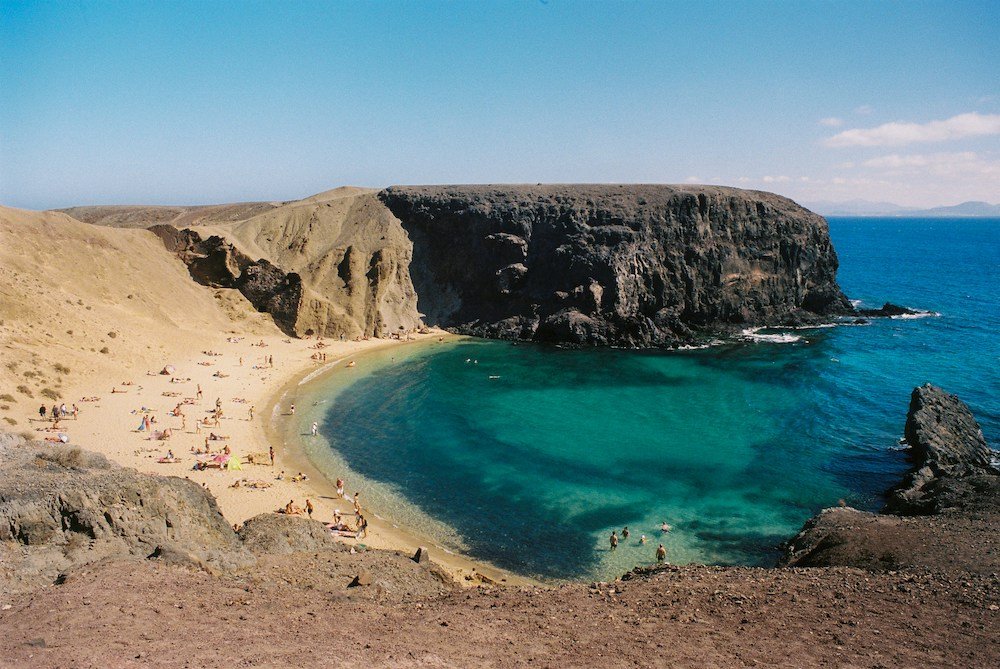
Lanzarote, one of the easternmost Canary Islands, is a captivating destination known for its otherworldly landscapes, volcanic terrain, and unique architectural heritage.
With its lunar-like landscapes and dramatic coastline, Lanzarote offers visitors a truly surreal experience unlike any other in the Canary Islands.
Lanzarote’s attractions, landscapes, and culture are deeply intertwined with its volcanic history.
The island’s most iconic landmark is Timanfaya National Park, a surreal landscape of volcanic craters, lava fields, and steaming geysers.
Visitors can explore the park on guided tours, marveling at the raw power of nature and witnessing demonstrations of the earth’s fiery depths.
Jameos del Agua is another must-visit attraction on Lanzarote, designed by the renowned local artist César Manrique.
This unique complex features a series of volcanic caves, natural pools, and gardens, creating a mesmerizing underground oasis that seamlessly blends art and nature.
The César Manrique Foundation, located in the artist’s former home, showcases his visionary work and celebrates his legacy as a pioneer of sustainable tourism on the island.
Key activities on Lanzarote include exploring the island’s rugged coastline, dotted with hidden coves, pristine beaches, and picturesque fishing villages.
Outdoor enthusiasts will appreciate the island’s excellent conditions for water sports such as windsurfing, diving, and snorkeling, while hikers can embark on scenic trails that lead through volcanic landscapes and along dramatic cliffs.
When planning a trip to Lanzarote, travelers will find a variety of accommodations to suit every taste and budget, from luxury resorts to charming boutique hotels and self-catering apartments.
Rental cars are a popular choice for exploring the island independently, while public transportation options such as buses and taxis are also available for getting around.
The best time to visit Lanzarote is during the spring and autumn months when the weather is mild, and tourist crowds are fewer, allowing visitors to fully immerse themselves in the island’s natural beauty and cultural heritage.
4. Fuerteventura
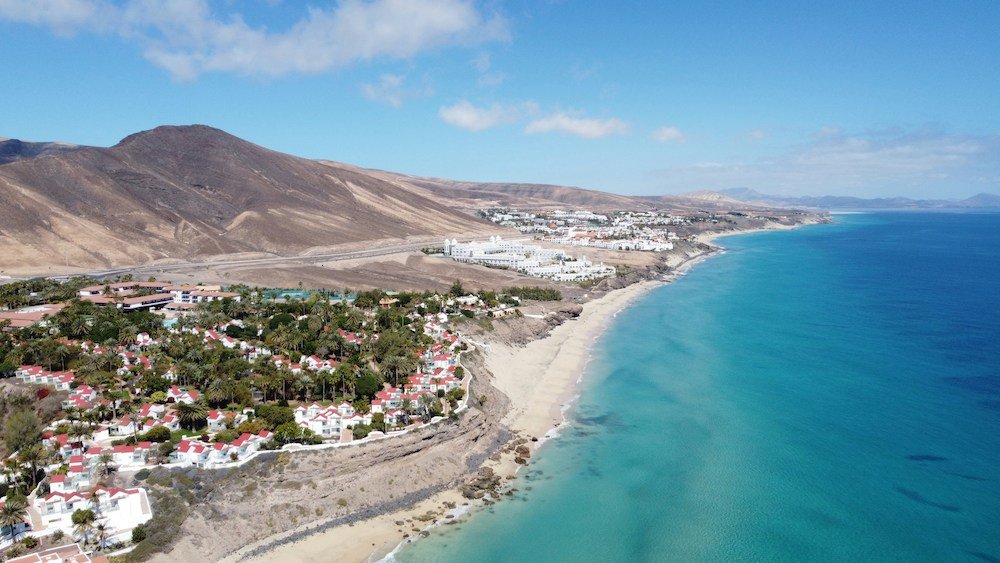
Fuerteventura, the second-largest of the Canary Islands, is renowned for its pristine beaches, rugged landscapes, and vibrant culture.
Located just off the coast of North Africa, Fuerteventura offers visitors a tranquil escape surrounded by the azure waters of the Atlantic Ocean.
Fuerteventura’s attractions, landscapes, and culture reflect the island’s unique blend of natural beauty and rich heritage.
The island is home to Corralejo Natural Park, a sprawling expanse of sand dunes, volcanic landscapes, and crystal-clear waters.
Visitors can explore the park on foot, by bike, or even on horseback, immersing themselves in the untamed beauty of Fuerteventura’s wilderness.
Fuerteventura’s beaches are among the most pristine in the Canary Islands, with miles of golden sands lapped by turquoise waves.
Whether you’re seeking solitude or adventure, Fuerteventura’s beaches offer something for everyone, from secluded coves to bustling resorts buzzing with activity.
The island is also a mecca for water sports enthusiasts, with world-class conditions for windsurfing, kitesurfing, and surfing attracting athletes from around the globe.
Key activities on Fuerteventura include exploring the island’s charming villages and historic sites, where traces of its ancient past blend seamlessly with modern-day life.
Travelers can immerse themselves in the island’s vibrant culture, sampling local cuisine, browsing artisan markets, and attending traditional festivals that celebrate Fuerteventura’s unique heritage.
When planning a trip to Fuerteventura, travelers will find a variety of accommodations to suit every preference and budget, from luxury resorts to cozy guesthouses and beachfront bungalows.
Rental cars are a convenient way to explore the island’s diverse landscapes and hidden treasures, while public transportation options such as buses and taxis are also available for getting around.
The best time to visit Fuerteventura is during the spring and autumn months when the weather is mild, and the island is less crowded, allowing visitors to fully enjoy all that Fuerteventura has to offer.
5. Mallorca
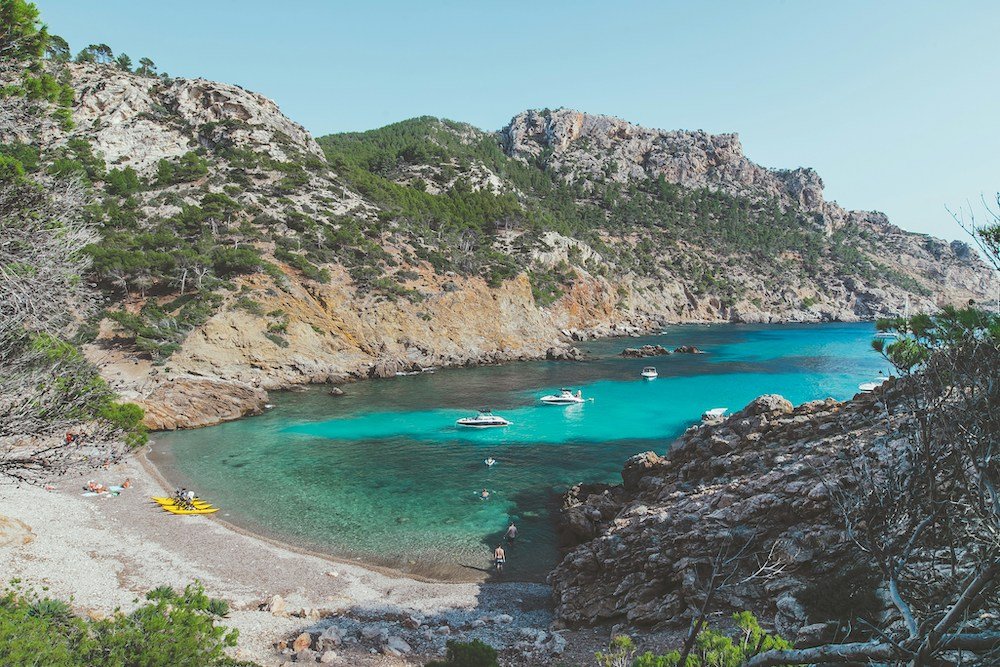
Mallorca, the largest of Spain’s Balearic Islands, is a captivating destination known for its stunning landscapes, historic architecture, and vibrant culture.
Located in the Mediterranean Sea, Mallorca offers visitors a diverse array of attractions, from picturesque beaches and charming villages to rugged mountains and lush countryside.
Mallorca’s attractions, landscapes, and culture are as varied as they are enchanting.
The island is home to Palma de Mallorca, its vibrant capital city, where visitors can explore historic landmarks such as the iconic Cathedral of Santa Maria, stroll along the charming narrow streets of the old town, and discover hidden courtyards and bustling markets that showcase the island’s rich heritage.
The Serra de Tramuntana mountain range, a UNESCO World Heritage Site, is another highlight of Mallorca, offering breathtaking vistas, scenic hiking trails, and quaint mountain villages nestled among terraced olive groves and citrus orchards.
Outdoor enthusiasts will delight in exploring the rugged terrain of the mountains, while history buffs can visit ancient monasteries, fortresses, and watchtowers that dot the landscape.
Key activities on Mallorca include soaking up the sun on the island’s pristine beaches, where golden sands and crystal-clear waters beckon visitors to relax and unwind.
From secluded coves and hidden bays to bustling resort towns and lively beach clubs, Mallorca’s coastline offers something for everyone, whether you’re seeking solitude or excitement.
When planning a trip to Mallorca, travelers will find a wide range of accommodations to suit every taste and budget, from luxury beachfront resorts to charming boutique hotels and traditional fincas nestled in the countryside.
Getting around the island is convenient thanks to an efficient public transportation system, including buses, trains, and rental cars, making it easy to explore Mallorca’s diverse landscapes and attractions.
The best time to visit Mallorca is during the spring and autumn months when the weather is mild, and tourist crowds are fewer, allowing visitors to fully immerse themselves in the island’s natural beauty and cultural heritage.
6. Menorca
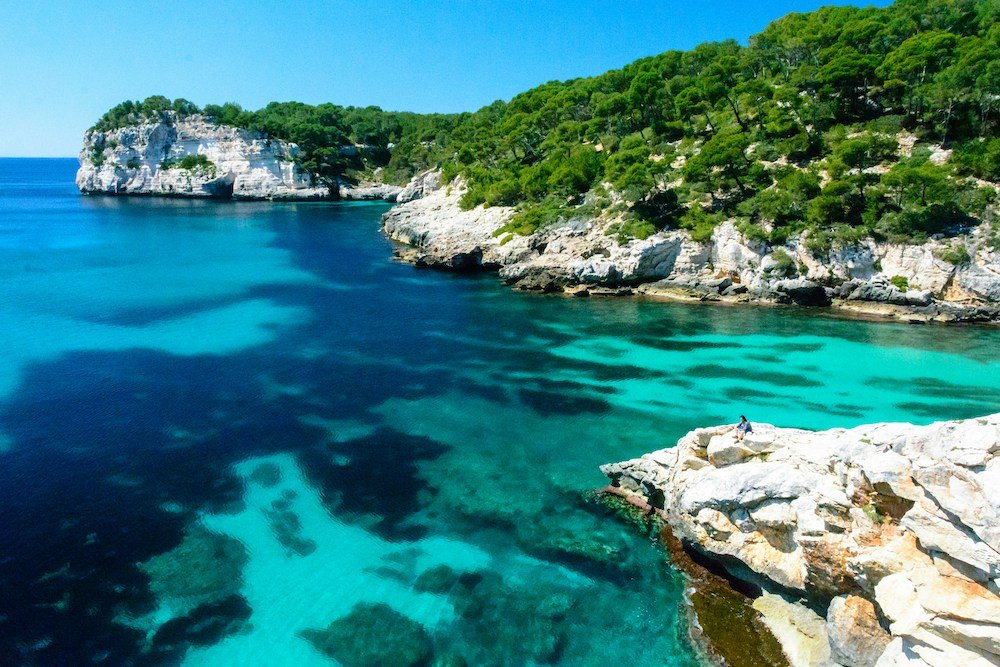
Menorca, the serene jewel of Spain’s Balearic Islands, is renowned for its unspoiled natural beauty, pristine beaches, and rich cultural heritage.
Situated in the western Mediterranean Sea, Menorca offers visitors a tranquil retreat away from the hustle and bustle of modern life, where time seems to stand still amidst stunning landscapes and historic sites.
Menorca’s attractions, landscapes, and culture reflect the island’s rich history and unique identity.
The charming town of Ciutadella, with its cobbled streets, medieval architecture, and bustling harbor, is a must-visit destination for history enthusiasts and culture seekers alike.
Visitors can explore ancient fortresses, picturesque plazas, and vibrant markets that showcase Menorca’s vibrant cultural heritage.
The island’s coastline is dotted with pristine beaches and secluded coves, including the idyllic Cala Turqueta, where crystal-clear waters and powdery white sands invite visitors to relax and unwind.
Outdoor enthusiasts will appreciate the island’s scenic hiking trails, including the Camí de Cavalls, a historic coastal path that encircles the entire island, offering breathtaking views of rugged cliffs, hidden bays, and turquoise seas.
Key activities on Menorca include exploring the island’s rich marine life through snorkeling and diving excursions, where colorful coral reefs and underwater caves await discovery.
Travelers can also immerse themselves in Menorca’s agricultural heritage by visiting traditional farms and vineyards, sampling local delicacies, and experiencing the island’s vibrant culinary scene.
When planning a trip to Menorca, travelers will find a variety of accommodations to suit every preference and budget, from luxury beachfront resorts to charming boutique hotels and family-run guesthouses.
Getting around the island is convenient thanks to an efficient public transportation system, including buses, taxis, and rental cars, making it easy to explore Menorca’s diverse landscapes and attractions.
The best time to visit Menorca is during the spring and autumn months when the weather is mild, and tourist crowds are fewer, allowing visitors to fully immerse themselves in the island’s natural beauty and cultural heritage.
7. Ibiza

Ibiza, often referred to as the “White Isle,” is a legendary destination known for its vibrant nightlife, stunning beaches, and bohemian charm.
Situated in the Balearic Islands of Spain, Ibiza captivates visitors with its breathtaking landscapes, historic sites, and cosmopolitan atmosphere.
Ibiza’s attractions, landscapes, and culture embody the island’s unique blend of ancient history and contemporary allure.
Ibiza Town, the island’s capital, is a picturesque maze of whitewashed buildings, cobbled streets, and fortified walls that encircle the historic Old Town, a UNESCO World Heritage Site.
Visitors can explore ancient landmarks such as the Dalt Vila fortress, stroll along the bustling port, and discover hidden boutiques, galleries, and artisan workshops that showcase Ibiza’s rich cultural heritage.
The island’s coastline is renowned for its pristine beaches, secluded coves, and crystal-clear waters, including the iconic Playa d’en Bossa, where visitors can soak up the sun, swim in the turquoise sea, or indulge in water sports such as snorkeling, diving, and jet skiing.
Ibiza is also famous for its legendary nightlife, with world-class clubs, beach bars, and rooftop lounges that pulse with energy until the early hours of the morning.
Key activities on Ibiza include exploring the mystical rock of Es Vedrà, a towering limestone formation shrouded in myth and legend, where visitors can hike, photograph, or simply marvel at the breathtaking views of the surrounding sea and coastline.
Travelers can also immerse themselves in Ibiza’s vibrant arts and music scene by attending live concerts, cultural events, and outdoor festivals that celebrate the island’s creative spirit.
When planning a trip to Ibiza, travelers will find a variety of accommodations to suit every taste and budget, from luxury beachfront resorts to charming boutique hotels and rustic villas nestled in the countryside.
Getting around the island is convenient thanks to an efficient public transportation system, including buses, taxis, and rental cars, making it easy to explore Ibiza’s diverse landscapes and attractions.
The best time to visit Ibiza is during the summer months when the weather is warm, and the island comes alive with music, festivities, and cultural events that showcase Ibiza’s vibrant spirit and infectious energy.
8. Formentera
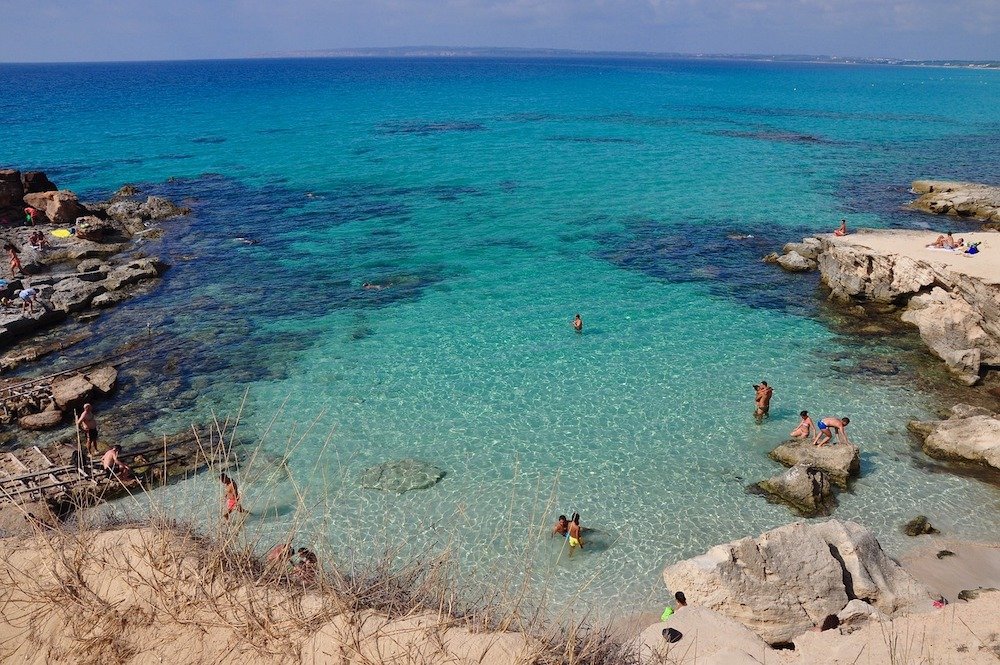
Formentera, the tranquil paradise of the Balearic Islands, is renowned for its pristine beaches, turquoise waters, and laid-back atmosphere.
Located just south of Ibiza, Formentera offers visitors a serene escape from the hustle and bustle of everyday life, where time seems to slow down amidst breathtaking natural beauty and unspoiled landscapes.
Formentera’s attractions, landscapes, and culture embody the island’s unique blend of Mediterranean charm and bohemian spirit.
The island’s beaches are among the most beautiful in the world, with powdery white sands, crystal-clear waters, and gently swaying palm trees creating an idyllic backdrop for relaxation and rejuvenation.
Visitors can explore iconic beaches such as Playa de Ses Illetes and Playa de Migjorn, where shallow turquoise waters and pristine sands invite visitors to swim, sunbathe, or simply soak up the sun.
Es Pujols, the island’s vibrant seaside resort, offers a lively atmosphere with bustling cafes, restaurants, and shops lining the waterfront promenade.
Visitors can stroll along the picturesque harbor, sample fresh seafood dishes, and immerse themselves in Formentera’s laid-back lifestyle.
La Savina, the island’s main port town, serves as a gateway to Formentera’s hidden treasures, including scenic walking trails, historic landmarks, and breathtaking viewpoints that offer panoramic views of the surrounding sea and coastline.
Key activities on Formentera include exploring the island’s pristine natural landscapes, where visitors can hike, bike, or horseback ride through pine forests, sand dunes, and salt marshes teeming with wildlife.
Water sports enthusiasts will delight in the island’s excellent conditions for snorkeling, diving, windsurfing, and paddleboarding, with crystal-clear waters and abundant marine life waiting to be discovered.
When planning a trip to Formentera, travelers will find a variety of accommodations to suit every preference and budget, from luxury beachfront resorts to cozy guesthouses and rustic beach bungalows.
Getting around the island is easy thanks to an efficient public transportation system, including buses, taxis, and rental bikes, making it convenient to explore Formentera’s hidden gems and off-the-beaten-path attractions.
The best time to visit Formentera is during the spring and autumn months when the weather is mild, and the island is less crowded, allowing visitors to fully immerse themselves in Formentera’s natural beauty and relaxed atmosphere.
9. La Gomera
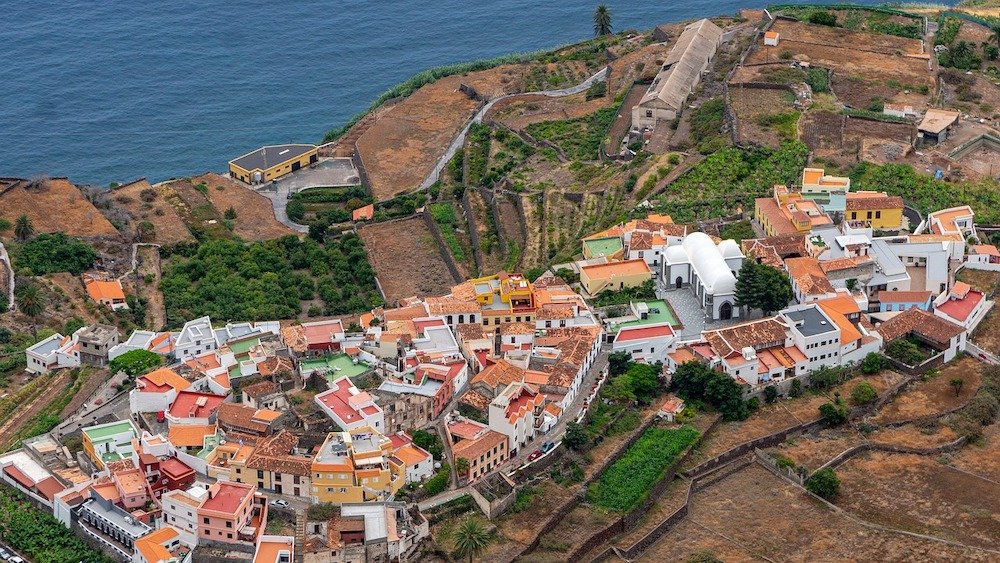
La Gomera, a hidden gem in Spain’s Canary Islands, is a captivating destination known for its lush landscapes, rugged coastlines, and rich cultural heritage.
Tucked away in the Atlantic Ocean, La Gomera offers visitors a tranquil retreat away from the crowds, where unspoiled nature and authentic charm abound.
La Gomera’s attractions, landscapes, and culture reflect the island’s unique blend of natural beauty and cultural diversity.
The centerpiece of La Gomera is Garajonay National Park, a UNESCO World Heritage Site and ancient laurel forest that covers much of the island’s interior.
Visitors can explore scenic hiking trails, cascading waterfalls, and mist-shrouded forests, immersing themselves in the island’s rich biodiversity and mystical atmosphere.
Valle Gran Rey, a picturesque valley on the western coast of La Gomera, is another highlight of the island, known for its dramatic cliffs, lush palm groves, and charming villages.
Visitors can hike through terraced fields, swim in natural rock pools, and explore traditional hamlets where time seems to stand still.
Key activities on La Gomera include exploring the island’s rugged coastline, dotted with secluded beaches, hidden coves, and rocky cliffs that offer breathtaking views of the surrounding sea and coastline.
Outdoor enthusiasts will appreciate the island’s excellent conditions for hiking, mountain biking, and birdwatching, with diverse ecosystems and habitats waiting to be discovered.
When planning a trip to La Gomera, travelers will find a variety of accommodations to suit every preference and budget, from eco-friendly ecolodges to cozy guesthouses and family-run hotels.
Getting around the island is convenient thanks to an efficient public transportation system, including buses, taxis, and rental cars, making it easy to explore La Gomera’s diverse landscapes and attractions.
The best time to visit La Gomera is during the spring and autumn months when the weather is mild, and the island is less crowded, allowing visitors to fully immerse themselves in La Gomera’s natural beauty and tranquil atmosphere.
10. La Palma
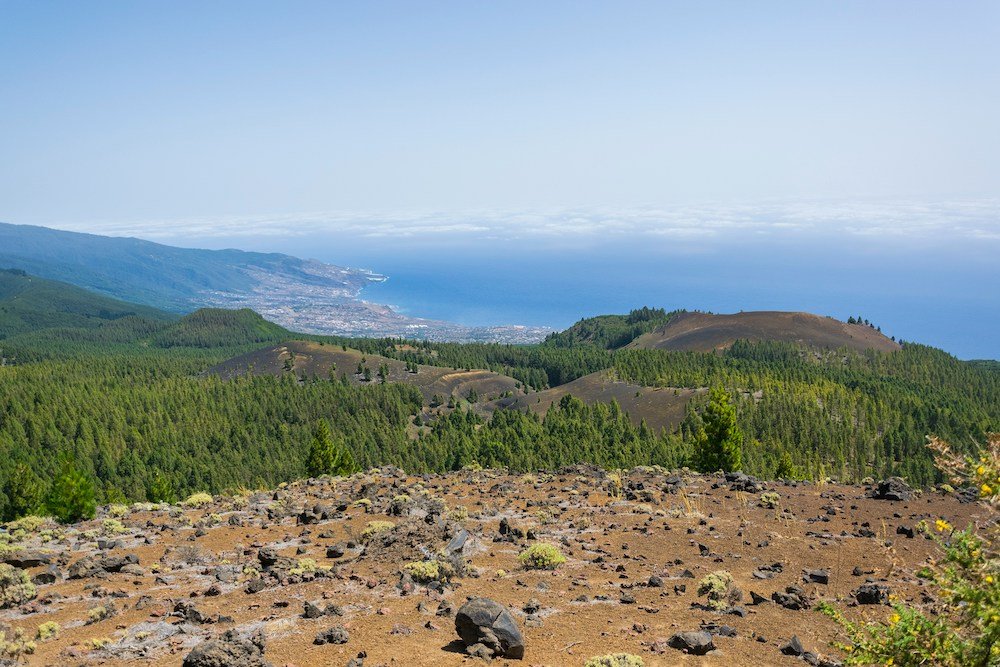
La Palma, often referred to as La Isla Bonita, is a hidden gem among Spain’s Canary Islands, known for its stunning natural beauty, diverse landscapes, and rich cultural heritage.
Situated in the Atlantic Ocean, La Palma offers visitors a tranquil escape surrounded by lush forests, rugged mountains, and pristine beaches.
La Palma’s attractions, landscapes, and culture reflect the island’s unique blend of volcanic geology and traditional charm.
The centerpiece of La Palma is Caldera de Taburiente National Park, a vast crater that dominates much of the island’s interior.
Visitors can explore scenic hiking trails, cascading waterfalls, and lush forests teeming with endemic flora and fauna, immersing themselves in the island’s rich biodiversity and natural splendor.
Roque de los Muchachos, the highest peak on La Palma, offers breathtaking views of the surrounding landscape and is home to one of the world’s premier astronomical observatories.
Visitors can marvel at the clear night skies and peer through powerful telescopes to observe distant galaxies, stars, and celestial phenomena, making La Palma a paradise for stargazers and astronomy enthusiasts alike.
Key activities on La Palma include exploring the island’s charming villages, where whitewashed houses, cobbled streets, and historic churches reflect the island’s rich cultural heritage.
Outdoor enthusiasts will appreciate the island’s excellent conditions for hiking, mountain biking, and paragliding, with diverse terrain and challenging trails waiting to be discovered.
When planning a trip to La Palma, travelers will find a variety of accommodations to suit every preference and budget, from boutique hotels and rural cottages to eco-friendly ecolodges and luxury resorts.
Getting around the island is convenient thanks to an efficient public transportation system, including buses, taxis, and rental cars, making it easy to explore La Palma’s diverse landscapes and attractions.
The best time to visit La Palma is during the spring and autumn months when the weather is mild, and the island is less crowded, allowing visitors to fully immerse themselves in La Palma’s natural beauty and tranquil atmosphere.
Conclusion
Each of the islands near Spain offers its own unique charm and attractions, making it difficult to choose just one to visit.
Tenerife, Gran Canaria, Lanzarote, Fuerteventura, Mallorca, Menorca, Ibiza, Formentera, La Gomera, and La Palma each have distinct landscapes, activities, and cultural experiences to offer travelers.
From the volcanic landscapes of Tenerife to the pristine beaches of Formentera, there is something for everyone among these diverse destinations.
The islands near Spain beckon travelers with their stunning natural beauty, rich cultural heritage, and diverse range of activities.
Whether you’re seeking relaxation on the beach, adventure in the mountains, or immersion in vibrant city life, these islands offer endless opportunities for exploration and discovery.
From UNESCO World Heritage Sites to picturesque villages and bustling cities, the islands near Spain have something to offer every type of traveler.
Exploring the islands near Spain is an opportunity to escape the ordinary and immerse oneself in the beauty and wonder of these enchanting destinations.
From the moment you set foot on the sandy shores or rugged cliffs, you’ll be transported to a world of breathtaking landscapes, fascinating history, and warm hospitality.
Whether you’re traveling solo, with family, or with friends, the islands near Spain promise an unforgettable experience that will leave you longing to return time and time again.
Now is the perfect time to plan your island getaway near Spain! With so many incredible destinations to choose from, there’s never been a better time to explore the islands and create memories that will last a lifetime.
Whether you’re dreaming of lounging on sun-drenched beaches, hiking through lush forests, or discovering hidden gems off the beaten path, the islands near Spain await your discovery.
Start planning your adventure today and embark on a journey of a lifetime to these captivating destinations.
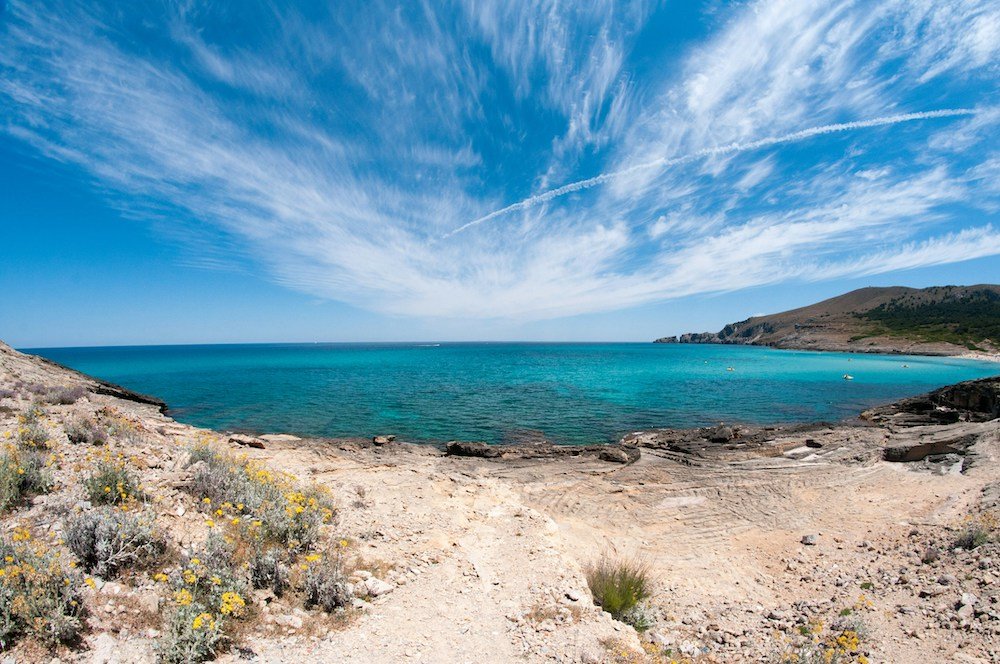
FAQ’s About the Islands Near Spain:
What Islands Are Off the Coast of Spain and Portugal?
Off the coast of Spain and Portugal, you can find the Canary Islands, a Spanish archipelago located in the Atlantic Ocean.
What Islands Are Near Spain and Morocco?
The Canary Islands are situated near both Spain and Morocco, closer to the northwest coast of Africa. These islands are part of Spanish territory.
What Islands Are Off the Atlantic Coast of Spain?
Off the Atlantic coast of Spain lie the beautiful Canary Islands, renowned for their volcanic landscapes, stunning beaches, and unique culture.
What Are the Main 4 Islands Off the Coast of Spain?
The main four islands off the coast of Spain are Tenerife, Gran Canaria, Lanzarote, and Fuerteventura, all part of the Canary Islands archipelago.
What Is the French Island Off the Coast of Spain?
Off the coast of Spain, you can find the French island of Corsica.
It is located in the Mediterranean Sea, southeast of mainland France and west of Italy.
What Islands Are in the Mediterranean Off Spain?
In the Mediterranean Sea off the coast of Spain, you can find the Balearic Islands, including Mallorca, Menorca, Ibiza, and Formentera.
What Is the Tourist Island Off Spain?
Ibiza is one of the most famous tourist islands off the coast of Spain, renowned for its vibrant nightlife, stunning beaches, and bohemian atmosphere.
What Is the Most Luxurious Island in Spain?
Ibiza and Mallorca are often considered the most luxurious islands in Spain, offering upscale resorts, gourmet dining, and exclusive amenities.
What Is the Name of the Beautiful Island in Spain?
Spain is home to several beautiful islands, including Mallorca, renowned for its stunning landscapes, historic towns, and vibrant culture.
Is Mallorca Cheap or Expensive?
Mallorca’s costliness can vary depending on various factors such as the season, location, and type of accommodation.
Generally, Mallorca offers a range of options from budget to luxury, catering to different preferences and budgets. It can be both affordable and luxurious, depending on the choices made by visitors.
